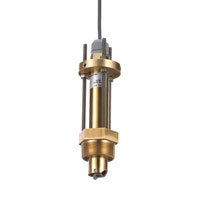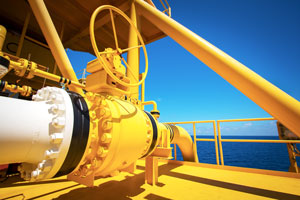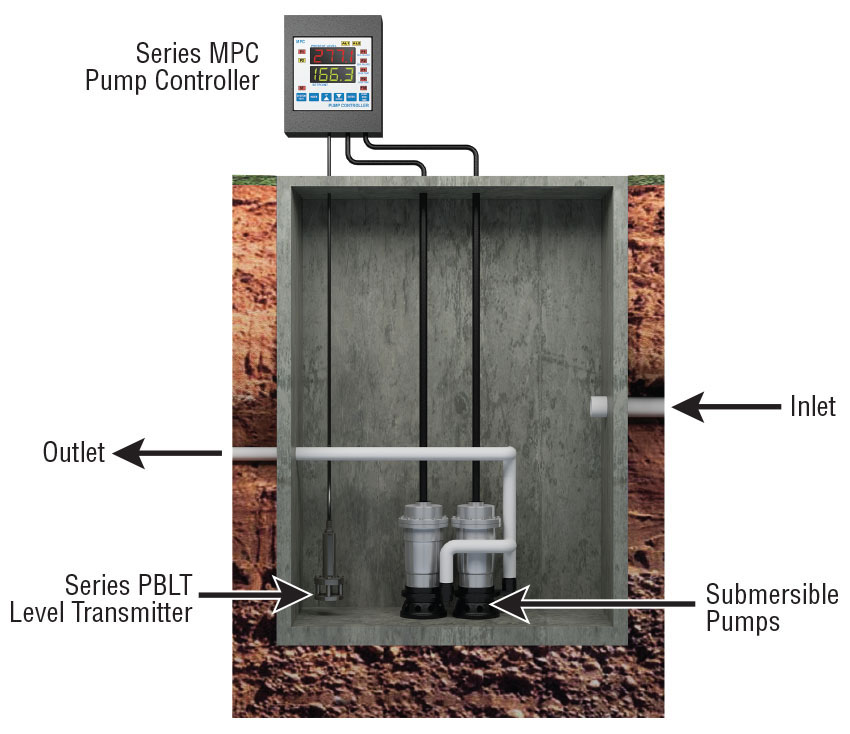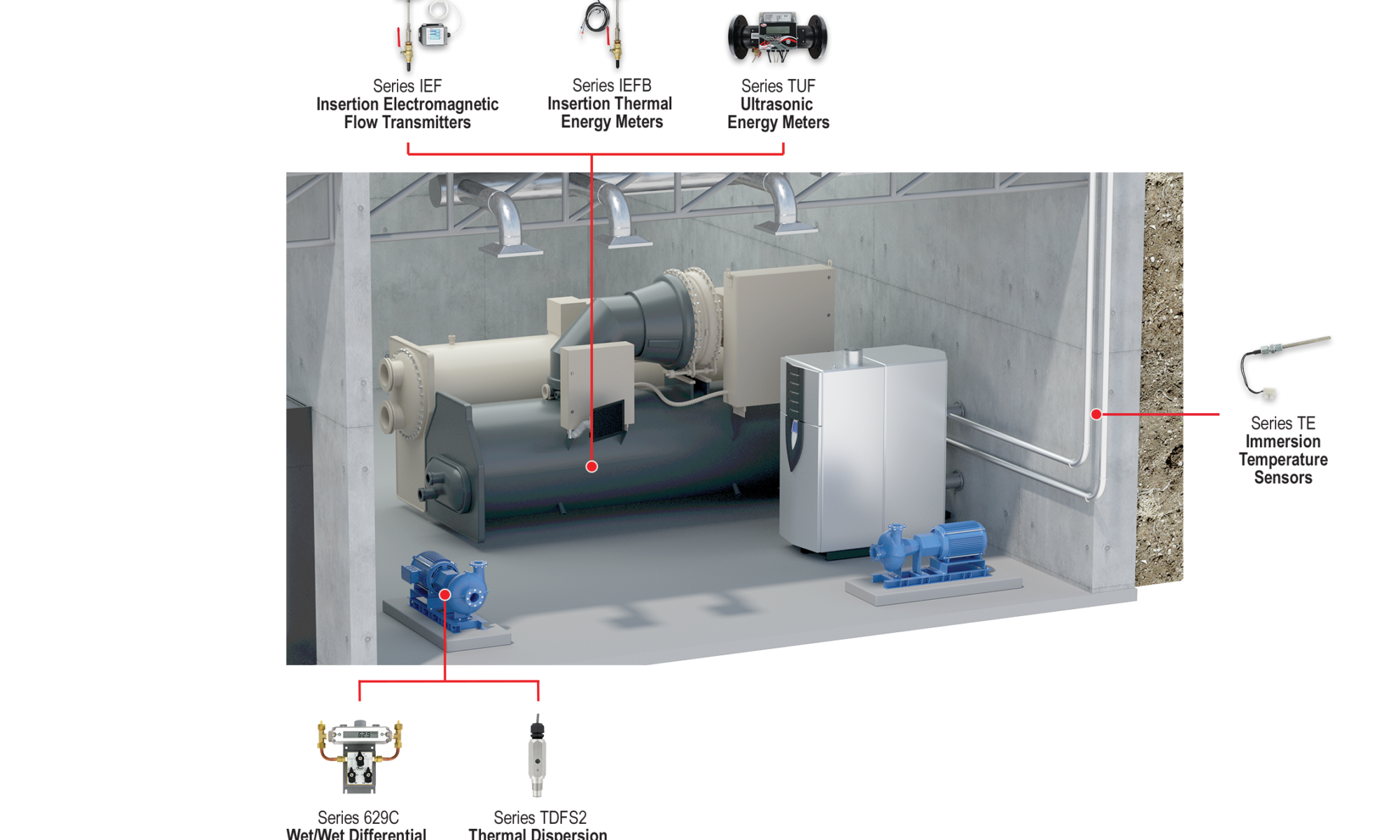 Ultrasonic flowmeters use sound waves to determine the velocity of a fluid flowing in a pipe. At no flow conditions, the frequencies of an ultrasonic wave transmitted into a pipe and its reflections from the fluid are the same. Under flowing conditions, the frequency of the reflected wave is different due to the Doppler effect. When the fluid moves faster, the frequency shift increases linearly. The transmitter processes signals from the transmitted wave and its reflections to determine the flow rate. Continue reading “How Ultrasonic Flowmeters Work”
Ultrasonic flowmeters use sound waves to determine the velocity of a fluid flowing in a pipe. At no flow conditions, the frequencies of an ultrasonic wave transmitted into a pipe and its reflections from the fluid are the same. Under flowing conditions, the frequency of the reflected wave is different due to the Doppler effect. When the fluid moves faster, the frequency shift increases linearly. The transmitter processes signals from the transmitted wave and its reflections to determine the flow rate. Continue reading “How Ultrasonic Flowmeters Work”
How Paddlewheel Flowmeters Work
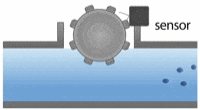
Paddlewheel flowmeters use the mechanical energy of the fluid to rotate a paddlewheel (just like a riverboat) in the flow stream. Paddles on the rotor are inserted into the flow to transform energy from the flow stream into rotational energy. The rotor shaft spins on bearings. When the fluid moves faster, the paddlewheel spins proportionally faster. Shaft rotation can be sensed mechanically or by detecting the movement of the paddles.
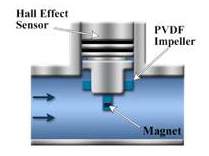 Paddle movement is often detected magnetically, with each paddle or embedded piece of metal generating a pulse. When the fluid moves faster, more pulses are generated. The transmitter processes the pulse signal to determine the flow of the fluid. Continue reading “How Paddlewheel Flowmeters Work”
Paddle movement is often detected magnetically, with each paddle or embedded piece of metal generating a pulse. When the fluid moves faster, more pulses are generated. The transmitter processes the pulse signal to determine the flow of the fluid. Continue reading “How Paddlewheel Flowmeters Work”
5 Factors to Consider When Choosing a Valve
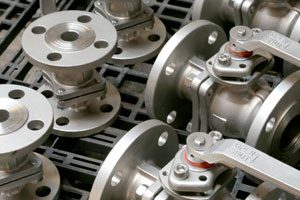 Valves are used to handle a wide variety of functions in controlling the flow of liquids and gases. With so many options available, it’s important to look at all of the factors to ensure you are selecting the correct valve for your application.
Valves are used to handle a wide variety of functions in controlling the flow of liquids and gases. With so many options available, it’s important to look at all of the factors to ensure you are selecting the correct valve for your application.
Continue reading “5 Factors to Consider When Choosing a Valve”
Pump Controller with Level Transmitter Control Pumps in Wastewater Lift Stations
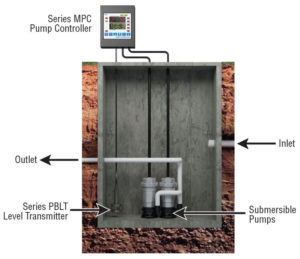
Lift stations are used to transmit wastewater to a treatment facility. In residential areas, lift stations may be located in a central point to a subdivision or community. Lift stations are pits located at points in the wastewater system to collect the wastewater and usually have two submersible pumps. In order to use gravity to move the wastewater along, it must be continually elevated to provide height to generate the flow. Wastewater in the lift station is pumped out to a higher level, from where it can flow on to the next lift station or to the treatment facility. As excavation and trenching for sewer pipes can be costly, using lift stations (and gravity) saves a substantial amount of money. Continue reading “Pump Controller with Level Transmitter Control Pumps in Wastewater Lift Stations”
School Energy Monitoring Solutions
 We talk a lot on this blog about the importance of indoor air quality in schools to boost students’ well-being. Also important to the school building is ensuring that the building is energy efficient – the dollars saved by reducing energy consumption can be used to further improve school facilities and enhance students’ learning environments. Continue reading “School Energy Monitoring Solutions”
We talk a lot on this blog about the importance of indoor air quality in schools to boost students’ well-being. Also important to the school building is ensuring that the building is energy efficient – the dollars saved by reducing energy consumption can be used to further improve school facilities and enhance students’ learning environments. Continue reading “School Energy Monitoring Solutions”

